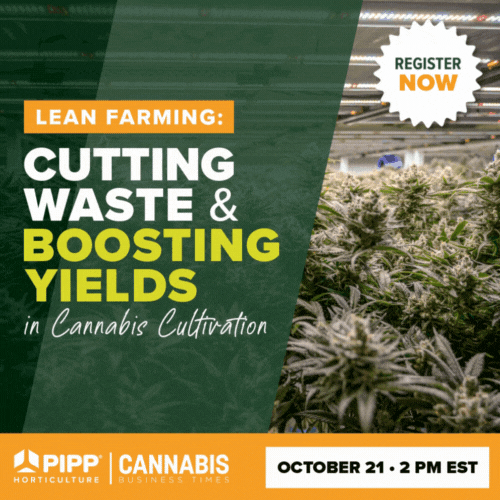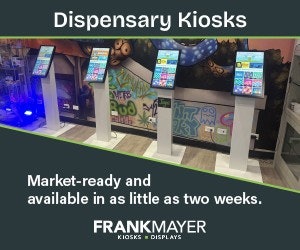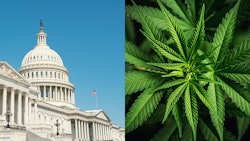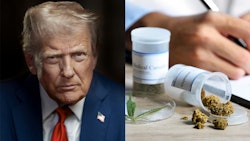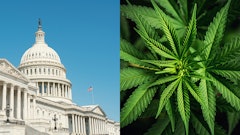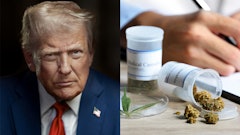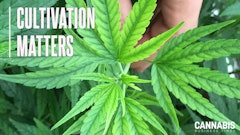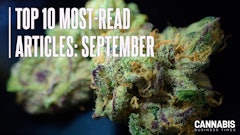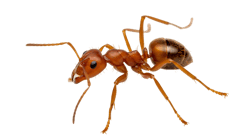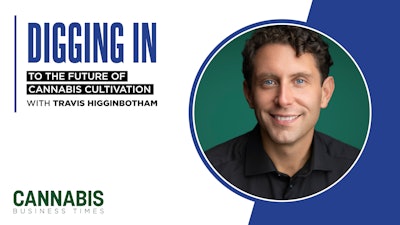
“If you need a machine and don’t buy it, then you will ultimately find that you have paid for it and don’t have it.” – Henry Ford
Few quotes better capture the current state of decision-making in controlled environment agriculture (CEA), cannabis cultivation, and greenhouse operations than this one from Henry Ford. Across the industry, operators are paralyzed by capital constraints, indecision, or a desire to minimize perceived risk—yet they fail to realize that the cost of not acting can often exceed the cost of the investment they’re avoiding.
When operators forgo necessary infrastructure—whether it’s environmental controls, lighting systems, automation equipment, or specific labor-saving tools—they’re not necessarily saving money. More accurately, they’re accumulating hidden losses.
This isn’t simply opportunity cost, which is the value of the best foregone alternative. In many cases, it’s worse. Instead of reallocating capital to a different growth-driving opportunity, the funds sit idle or get swallowed by ongoing operational expenses—rent, payroll, utilities, licensing fees, property taxes, debt repayment—none of which move the needle long-term.
When thinking about all of this, I revisited the concept of risk aversion, defined as the tendency to sacrifice potential upside in order to avoid potential loss. In the cultivation industry, this behavior often manifests as short-term financial conservatism that undermines long-term viability. When operators hesitate to deploy excess cash into yield-optimizing upgrades, that cash tends to erode into everyday overhead—leaving the operation no better off, or even worse off than before.
This is why Ford’s quote matters. Too many cultivation businesses know they need a “machine”—a system, a process, an investment that could elevate their output—but don’t make the decision in time. And ultimately, they pay for it, without ever owning it.
Why Does This Keep Happening
The recurring hesitation to invest in essential cultivation infrastructure stems from three primary factors: Limited capital, lack of education—and therefore lack of decisive decision making and confidence—and limited access to reasonable vendor financing. Operators know they need to enhance their growing environment in order to produce more output to achieve diluted costs per unit (lbs). However, either they don’t fully understand the financial upside of doing so, or there are financial hinderances, such as the capital required is presented to them with financing terms that are too burdensome, they don’t qualify or they don’t understand how to pencil out the claims confidently alongside long lead times in cultivation production impact realization (CPIR).
(Note: Most equipment financing ranges from 15% to 28% APR and as low as 8% to 10% APR directly from the manufacturer, with two- to three-year terms requiring a personal guarantee, multiple years in business, positive cash position, etc.)
Let’s discuss lighting first in this article and CO2 and fertigation in the next two as primary examples—an elementary, low-hanging fruit investment that should be at the top of your CapEx budget.
Imagine you’re managing a 50,000-square-foot cannabis flowering greenhouse. You’re considering investing in LED fixtures. A vendor presents you with a fixture boasting the following specs:
• Power Draw: 1,000 watts
• Efficacy: 3.5 µmol/J
• Strategic Broad Spectrum
At an electricity rate of $0.23/kWh, each fixture costs $0.23 per hour to operate. On a 12-hour flowering photoperiod, that’s $2.76 per day in electrical cost/fixture. But here’s the crucial point: For every $1 spent on electricity, this fixture delivers 55 moles of PAR (Photosynthetically Active Radiation) to your crop.
(Note: Keep in mind a typical HPS fixture would cost you the same in electrical costs per day but produce 50% less PAR at 27 moles per day per fixture.)
Assuming a Photon Conversion Efficiency (PCE) of 0.2 grams per mole (which is considered the high end for most cannabis facilities), this means:
• Each fixture has the potential to contribute 30 grams of dried flower per day during its usage.
• At a wholesale price of $575 per pound, that equates to $38 in potential revenue per fixture, per day.
• Over an 8-week flowering cycle (56 days), that single fixture generates $2,128 of revenue potential per crop.
RELATED: How to Maximize Your Photon Conversion Efficiency to Lower Your Cost Per Pound
Scaling this up:
• To achieve an optimal supplemental light intensity of 500 µmol/m²/s across your entire 50,000 square feet of flowering canopy, you would need approximately 668 fixtures.
• At a cost of $900 per fixture, your total capital outlay is $601,200.
Now Let's Talk About Returns
With the production metrics outlined above, these 668 fixtures could enable you to generate up to $9.3 million in additional revenue annually (assuming consistent fixed-area perpetual harvests). That’s a return of 15x on your initial investment—a payback period of less than one year, even with conservative yield efficiency assumptions at 0.2g/mole which could be as high as 0.3g/mole. (Most growers have 0.12 - 0.15g/mole as current state yield performance. Easy low-hanging fruit here to improve to 0.2 with zero capital.)
The Cost of Waiting: Missed Yield and Revenue
Every day a grower delays investing in this infrastructure, they are losing yield and revenue capacity.
Consider this:
• Daily Yield Potential per Fixture: 30 grams = 0.0661 lbs.
• Daily Revenue Potential per Fixture: $38
• Entire Greenhouse (668 Fixtures):
• Daily Yield: 668 x 0.0661 lbs. = 44.2 lbs./day
• Daily Revenue: 44.2 lbs. x $575 = $25,415/day
Now factor in lead times:
• Manufacturing & Delivery: 12 weeks (84 days)
• Installation & Commissioning: 3–6 weeks (21–42 days)
• Total Lead Time: 15–18 weeks (105–126 days)
The missed revenue in just the lead time to get the lights after purchase:
• Best Case (15 weeks / 105 days): 105 x $25,415 = $2,668,575 lost revenue
• Worst Case (18 weeks / 126 days): 126 x $25,415 = $3,202,290 lost revenue
For every week you delay on making this decision, on top of the lead time of shipping and installation, you are actively giving up $178K in top line sales revenue weekly you would otherwise be guaranteed to realize continuously in no less than 6 months.
This is a quantifiable, avoidable loss. Delaying action is not “playing it safe”—it is absorbing guaranteed, compounding losses that cripple operational cash flow and investor returns.
Travis Higginbotham is the founder of Due Diligence Horticulture (DDH) and an authority in commercial horticulture and cannabis production. He holds a B.S. in Horticulture from Clemson University and an M.S. in Horticulture from Virginia Tech. Most recently, he served as vice president of cultivation at California's Statehouse Holdings managing a Cultivation Business Unit responsible for over 223,000 square feet of canopy, postharvest, processing, distribution and bulk sales. Prior to Statehouse, Higginbotham was director of research and development at Battlefield Farms, managing global partnerships with major retailers and plant breeders focused on production research and product development for a 1.8-million-square-foot greenhouse operation. After Battlefield, he was global director of Horticulture Services at Fluence Bioengineering, where he co-invented two smart farming patents and led a global technical support team. He also served as vice president of sales and business development at The Hemp Mine, establishing a robust supply chain for cannabis genetics in the hemp sector. Currently, he leads DDH, taking on fractional CEO roles in multiple states, spinning up operations of distressed assets, and serves in advisory and board positions for several companies, driving advancements in horticultural practices and cannabis production.

